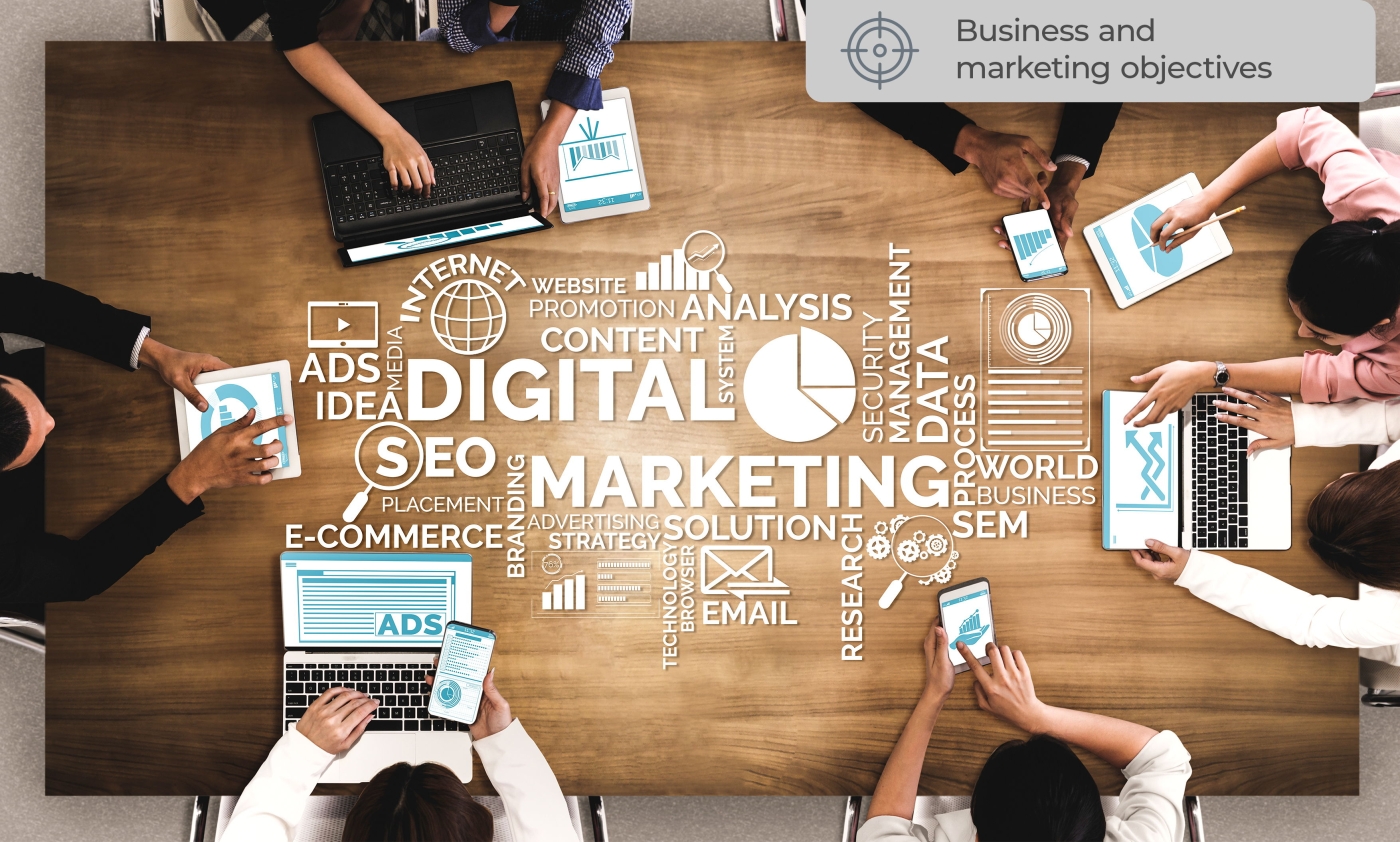10 Components
of Marketing Resource Management
Every business owner knows that managing resources are a key to success. It is, however, a whole science that requires theoretical knowledge and practice. The marketing aspect of resource management is not an exception, as it outlines the direction and path your company is going to take.
Before diving into the components of marketing resource management, let’s first figure out what marketing resources are. This is an umbrella term for all assets that can be used by the marketing function. Therefore, marketing resource management distributes all marketing resources, in order to achieve the best possible outcome at the lowest effort and cost.
Our 3D rendering company works tightly with marketing departments of leading furniture and other product brands from all over the world. So we’ve learned a lot from them and are ready to share this knowledge with anyone who’s interested in starting their own enterprise or making a career in marketing. Let’s find out 10 key components of marketing resource management.
#1. Business Strategy

As a business dictionary states, business strategy is the course of action or set of decisions that assist the entrepreneurs in achieving specific business objectives. There are three main types of them:
- A corporate-level strategy developed by top managers;
- A business-level strategy developed by general managers;
- A functional level strategy developed by first-line managers or supervisors.
The main purpose of business strategy is to enhance the company’s market position and overall performance as well as adjust to unexpected developments and new market conditions.
#2. Business and Marketing Objective

A business objective is a measurable path to achieving business goals. It consists of clear steps and achievable needs, when they should be done, how they should be done, and who is primarily accountable for each of them.
A marketing objective is subordinate to the business objective. It is more specific in the sense that it outlines all the steps that have to be done to achieve the main business objectives.
Both objectives are unachievable without proper marketing resource management which is the foundation of every company.
Resources
Business resources are factors necessary to accomplish a goal or carry out an activity. In short, they are the components that a company needs in order to do business.
#3. Human Resources

Human resources (HR) is a segment of marketing resource management that is responsible for finding, screening, recruiting, and training job applicants, as well as administering employee-benefit programs. The goal is to maximize the effectiveness of employees, maximize the return of investment and reduce performance-related risks.
People who work in the HR field are called HR specialists. The term includes more than 10 job titles. The most important are managers, recruiters, and coordinators. At smaller companies, there are HR generalists that perform a broader spectrum of functions.
#4. Physical Resources

Physical resources in marketing resource management comprise all the materialistic resources such as facilities, equipment, supplies, and everything that is utilized by the enterprise. Physical resources management is responsible for several key processes:
- Plan Resource Management;
- Estimate Activity Resources;
- Acquire Resources;
- Control Resources.
The managers ensure obtaining, monitoring, and controlling physical resources so that everything is available when it’s needed. This way, the activities can be carried out without any disruptions.
#5. Technological Resources

Technological resources in marketing resource management cover a wide range of things such as energy, data, tools, and programs. Some of the mentioned things correlate with physical resources but the difference is that you cannot feel, touch, or smell a technological resource. For example, a computer is a physical resource while the software is a technological resource.
The most important technological resources are:
- Energy (electricity, solar power);
- Information (data on computers or machines, or found in research, regulations, laws, and books);
- Materials (synthetic and natural materials);
- Time;
- Tools (software, hardware);
- Capital (land, real estate).
Like all the other resources, technological ones make the process of creating anything required for the company much more effective.
#6. Financial Resources

Finance resources comprise the segment of marketing resource management that is put into the production process. It is often called just Finance (such as Business Finance, Personal Finance, Public Finance). Finance covers all financial funds of the organization and is considered to be economic assets (property).
Finance resources are divided into:
- Business funds (cash, deposits with financial institutions and cash equivalents);
- Corporate capital (all money invested in the organization’s total assets);
- Other financial resources (“inflow” of money into the company for a certain period).
They include:
- Money and gold (in cash or in bank accounts);
- Shares;
- Bonds;
- Debentures;
- Promissory notes;
- Checks.
Management
Business management is the coordination and organization of business activities. These include accounting, marketing and administrative procedures that help to run a company.
#7. Project and Task Planning

A project plan or project management plan is a guide to the execution and control phases of a project. It includes all the answers to how a project going to be brought to life task by task. The plan also states employees who are responsible for each task and the deadlines. A standard project plan comprises:
- Project Charter;
- Project Plan Template;
- Statement of Work (SoW);
- Work Process Structure.
Project and task planning consists of 5 main stages:
- Initiation;
- Planning;
- Execution;
- Monitoring & Controlling;
- Assessing Results.
For the whole process to go well, managers have a few important responsibilities such as defining goals and milestones, analyzing risks, organizing project teams, and distributing marketing resources.
#8. Budget Planning

Budget planning management is calculating and utilizing finance resources to control the operations of a business. The main goal of budget planning is to use investments effectively and get the most out of them as a result.
Even though budget planning depends on the model used for the business and its product marketing strategy, it still requires the same elements to get a successful outcome:
- Estimated revenue (the expected amount of money to get from the sale of goods or services);
- Fixed costs (regular, consistent costs that don’t change no matter what’s the revenue is);
- Variable costs (costs that change according to production or sales volume);
- One-off costs (costs that fall outside the usual work a business does);
- Cash flow (all money traveling into and out of a business);
- Profit (the sum after deducting expenses from revenue);
- A budget calculator.
It is important to come up with detailed estimates for all the project costs. When they are accurately integrated into a budget plan, it is possible to track the project according to that budget while the work is ongoing.
#9. Financial Forecast and Outcome

Financial forecasting estimates a company’s future financial outcomes by examining previous financial data. It helps the management make adjustments to production and inventory plans. At first sight, it looks a lot like budget planning but the difference is significant.
Budget planning outlines the direction management wants to take the company. The financial forecast shows whether the company is reaching its budget goals. Some of those goals may be not attainable due to changing market conditions. And financial forecasting predicts exactly those. Therefore, budgeting and financial forecasting have to work in tandem to achieve the most favorable outcome.
#10. Metrics and Tracking
![]()
Business metrics are quantifiable measures that track different processes to judge the performance level of a business. Usually, manufacturing, marketing, and sales departments track their own metrics. Financial management tracks earnings before interest, taxes, depreciation, and amortization. HR specialists have to keep an eye on the key performance indicator (KPI) to measure the performance of employees.
Here are some essential metrics for any type of business:
Sales
- Net sales revenue;
- Quota attainment;
- Growth rate;
- Churn rate;
- Lead response.
Marketing
- Return on marketing investment (ROMI);
- Cost per lead (CPL);
- Customer acquisition cost (CAC);
- Customer lifetime value (CLV);
- Customer retention;
- Website traffic-to-lead ratio;
- Conversion rate;
- Website bounce rate.
Finance
- Net income;
- Net profit margin;
- Gross profit margin;
- Current ratio;
- Working capital;
- Accounts receivable turnover ratio;
- Percentage of accounts payable overdue.
Human Resources
- Employee turnover rate;
- Revenue per employee (R/e);
- Employee net promoter score (eNPS);
- Training spend per employee;
- Career path ratio.
These make just a small part of all metrics that one tracks when running a company but they are the most universal. Others can be specific to certain types of businesses and marketing resource management processes.
To run a company, one has to be prepared to use its resources smartly and effectively. That’s why marketing resource management is the foundation of any company hoping to become successful. We’ve only touched the tip of the iceberg of this topic. But from here on, you can start to explore the art of business management to achieve all your goals.
If you ever need stunning visuals for your marketing campaigns, feel free to contact CGIFURNITURE to get top-notch 3D rendering services. We know what product visuals will bring more leads and boost sales!
Leave a Reply
Want to join the discussion?Feel free to contribute!



Nice ideas and tips that business owners can follow through it.